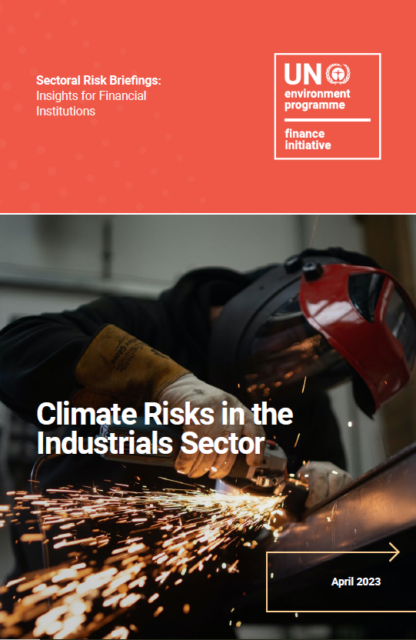The industrials sector emits 25% of global carbon dioxide (CO2) emissions. Including construction inputs such as cement, steel and iron, as well as petrochemicals such as plastics and ammonia, the sector includes many high emitting activities known to be hard to decarbonise.
As the global economy accelerates its efforts to meet the goal of net-zero emissions by 2050, the industrials sector will have both a crucial role in decarbonising the global economy and face substantial transition risks. Growing policy pressures, risk of legal and reputational damage, and technological innovations will reduce the market share of conventional producers with less carbon-intensive alternatives.
Relying on stable climate conditions to enable effective operations in complex supply chains, the industrials sector is also at risk from the physical impacts of climate change such as storms, droughts, and wildfires that will make current industrial practices more difficult or risky.
This brief explores the key physical and transition risks that banks, investors and insurers with clients in the industrials sector face. It includes case studies and provides concrete recommendations to identify and mitigate climate risks in the sector, while aligning financing with a just transition approach that considers the impact of the transition on workers, indigenous groups and local communities.
This brief is part of a series covering the following major economic sectors and their associated physical and transition climate risks. All these resources are part of the UNEP FI Risk Centre which helps members take an integrated approach to sustainability risks and aims to accelerate the move a sustainable financial and economic system.



